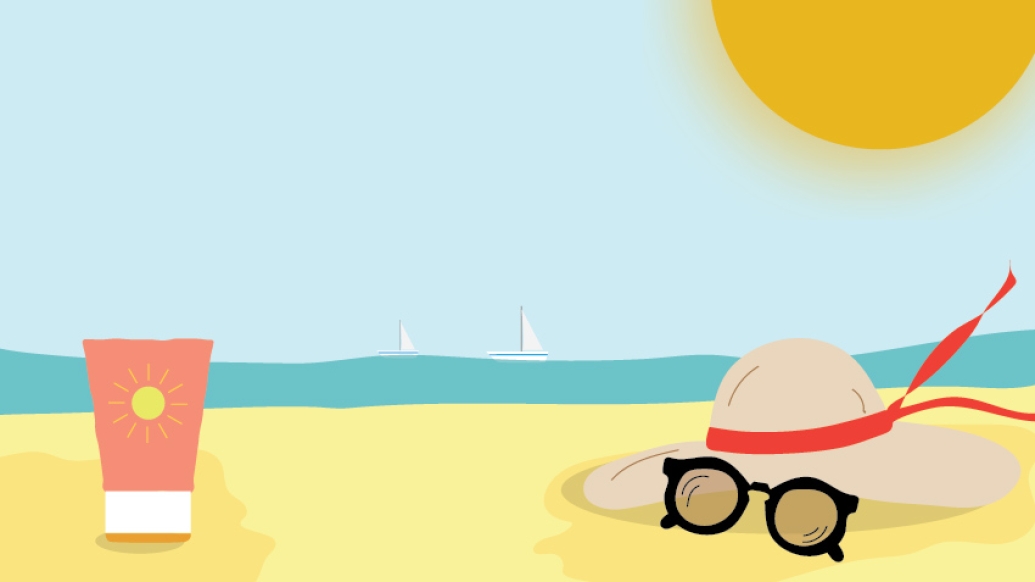Sunscreen is a key preventive tool — but only when used properly. A Michigan Medicine dermatologist offers tips for optimal coverage.
7:00 AM
Author |

As summer blazes on with a busy schedule packed full of picnics, pool days and other outdoor excursions, it's easy to forget one crucial element: sunscreen.
MORE FROM MICHIGAN: Sign up for our weekly newsletter
An occasional resulting sunburn can cause damage. But regular long-term unprotected exposure also can take its toll.
"In addition to sunburns, it's the cumulative exposure to sun that ultimately predisposes a person to skin cancer and accelerated aging," says Frank Wang, M.D., an associate professor of clinical dermatology at the University of Michigan Medical School.
That's why, along with other precautions, a good sunscreen is key.
But it is only effective when used properly, says Wang, who shed light on common sunscreen mistakes — and how to fix them.
8 common sunscreen mistakes
You're not using sunscreen year-round
Shielding your skin should be a priority in sun and snow alike. And it needn't only precede a trip to the pool or beach. Says Wang: "It's so important to protect yourself every day to prevent changes that can occur down the line."
A key defense, he says, is applying a 2-in-1 moisturizer with sunscreen on all exposed skin before you leave the house each morning. Leave the bottle next to your toothpaste to foster a habit.
Your SPF is too low
When choosing a sunscreen, check its sun protection factor (SPF), a scale indicating the level of defense from sunburn-causing UVB rays. An SPF of 30 should be used on a daily basis.
But since many sunscreens contain less SPF than advertised — and users might fail to wear enough of it — Wang recommends a minimum of SPF 50 when outdoors. Higher variations exist, but "you don't really gain a whole lot," he says.
You lack broad spectrum protection
Only use sunscreen with broad spectrum coverage. That term indicates dual protection from UVA rays (the ones that cause spots and wrinkles, and possibly skin cancer) and UVB rays (which lead to burns and skin cancer).
SEE ALSO: Watch Out for These 5 Summer Eye Dangers
"Our skin is exposed to both types of rays," says Wang. "We haven't paid as much attention to UVA rays in the past, but we're increasingly realizing their effects on the skin."
Your spray sunscreen has shortcomings
Aerosol sprays are convenient. But they also can cover unevenly — as anyone who has used them on a windy day will attest. Rub the contents evenly all over your skin after spraying, Wang advises.
The Food and Drug Administration continues to research whether inhaling the chemical contents of spray sunscreen is hazardous, so never mist your face directly. Spray the liquid into your hands and apply it that way.
You aren't using sunscreen often — or extensively — enough
Application isn't a one-and-done task: "Sunscreens break down and people don't realize that," says Wang. Put on sunscreen 20 minutes before you go out and reapply it every two hours when in direct sunlight, no matter the weather or your SPF level.
Experts often advise using 1 ounce of sunscreen (about the capacity of a shot glass) but Wang notes that needs and body types vary. "Apply a copious amount to any exposed area," he says. "Not overly thick but rubbed in evenly."
You're swimming or sweating
Planning to take a dip or hit the trail? Make sure you've got a sunscreen described as water- or sweat-resistant, depending on the activity. Apply it at least 20 minutes in advance, while your skin is still dry.
Despite the specialized coverage, water- or sweat-resistant sunscreens need to be applied more frequently, roughly every 40 minutes. Again, make sure your skin is dry first.
You're skipping it based on skin tone
It might be no surprise that people with pale skin and hair have a greater need for sunscreen. But everyone, no matter their color or ethnicity, should make the effort to lather up.
Those with darker skin may have lesser risk but that's no excuse. Says Wang: "Asian-Americans, Hispanic-Americans and African-Americans still burn." And everyone risks skin damage and premature aging as a result of extended time in the sun.
You aren't taking other precautions
Protecting your skin requires more than sunscreen. Consider sun-protective clothing (made of fabrics that provide UV protection) as well as wide-brimmed hats and sunglasses whenever you're outside. Seek shade when you can.
Timing is important, too: "Try not to go out in the middle of the day from 10 to 3" when the sun is at its strongest, says Wang.

Explore a variety of health care news & stories by visiting the Health Lab home page for more articles.

Department of Communication at Michigan Medicine
Want top health & research news weekly? Sign up for Health Lab’s newsletters today!





